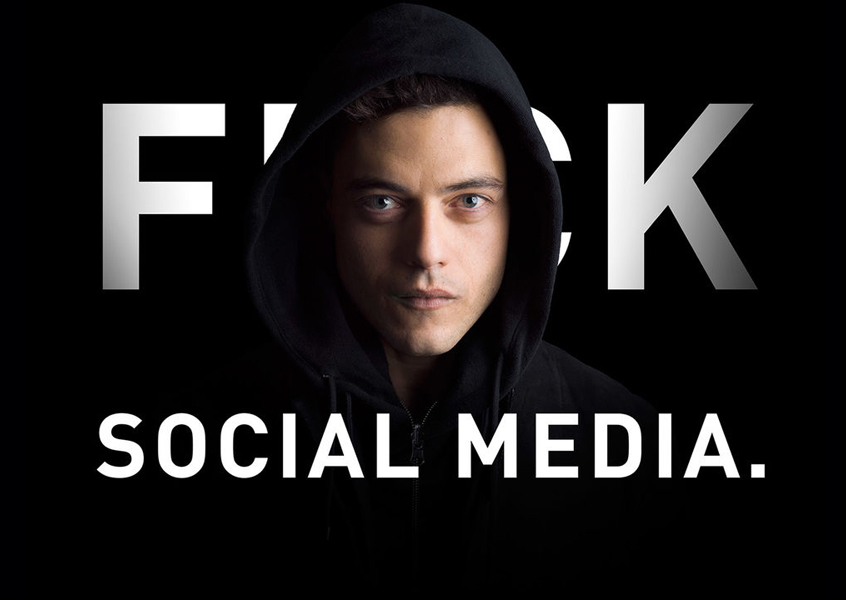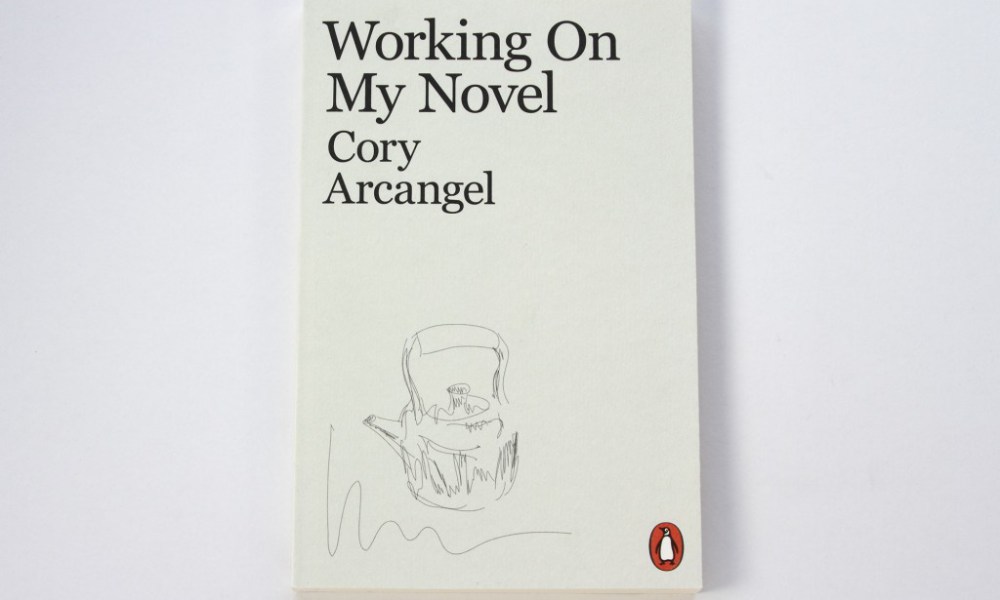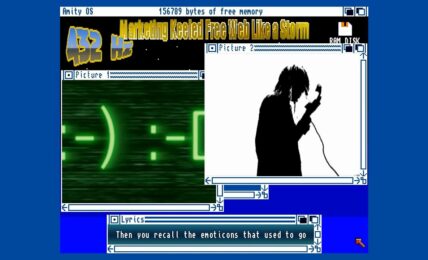I learned of The Bots during a recent curation of a curation of their work. The 121-word article by Max Ufberg for Wired was called, “This Is the Internettiest Music Video That Ever Internetted.” This internetty “music video” for All I Really Want—a catching song with lyrics played out in a scrolling buzzfeed list of wrestlers, pandas, cats, SpongeBob and cats. It is The Bots’ “official video,” made by Madison Bullard for Fader Label, the distributor.
My first impression was that Wired might be correct. It was definitely internetty. Maybe the internettiest. And like the Wired article, I didn’t have a lot I could say about it, apart from pointing out that I recognized some or most of the .gifs and that the song is catching, which I’ve been reduced to repeating already.
It was, in fact, this reduction of a suitable description that led me to become interested in questioning it as a “music video” entirely. It is better described as an automated listicle synced to music (but that’s not a name that goes viral). Just as a video can play by itself, this is the listicle that scrolls itself. It is the type of production that highlights video as a multi-modal vehicle for story, trading cuts for the scroll and prose for numbered lists, and generally ignoring the presence of a user. It’s exactly the quality that separates video as a standalone medium from the internet, which is itself not just a platform, but a medium unique for its hyperlinked database structure. It is the clicking and scrolling—the external human using—that reveals the internet medium in opposition to video. The piece clicks and scrolls like an internet while holding on tight to video’s disregard for a click-happy user.
Being disregarded lets us forget our usual intentioning of the internet, and allows us to be captivated in peering into the shared experience of the recorded user. This is the nature of screen-caps—to make shareable humo-digital interactions into digital memories from the perspective of the user. The Bots video doesn’t go far enough to re-invent this, but it draws us in because we generally expect screen-caps to be in the form of utility—instructional videos, troubleshooting tips, step-by-steps, how-tos and other types that focus on information and example over aesthetic. The Bots aren’t doing any of that. As viewers we are committed to the animated .gifs and the first-person perspective of the user, and it seems strictly for the relishing of user experience. This is a screen-cap about scrolling. But analyzing its merits as a screen-cap falls short of the goal in reviewing this listeo (or vidicle) in anticipation of others that deserve equal credit in failing to be “music videos.”
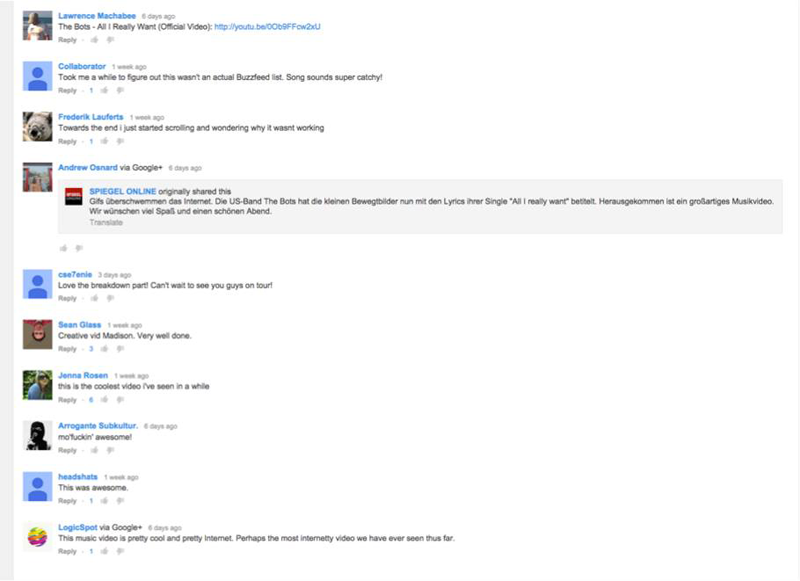
As narratives in music videos go, this is as loose as any. It is puzzle-pieced together through a series of animated .gifs separated by the song lyrics that act like title cards. There are identifiable connections to be made, even if meaning is constantly threatened by the quantity of .gifs we’re gobbling up. Almost every .gif relates to the lyric preceding it and it’s only a matter of keeping up with them to get some superfluous meaning out of the song. There is a deeper (forgive me, meta) irony, though. In lyrics 7-11, the lead singer, Mikaiah Lei, talks about boredom amidst the fecundity of the internet with disdain in his voice.
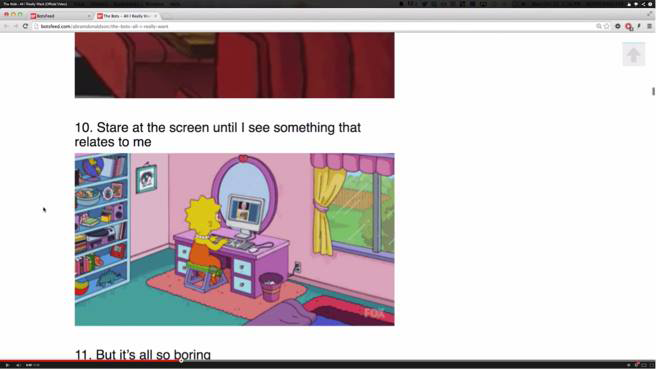
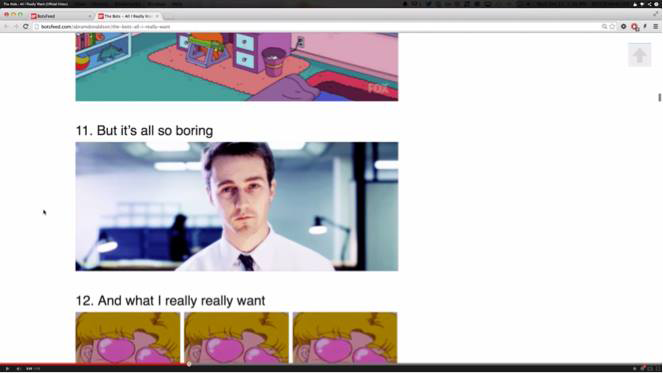
It is this very Buzzfeed list that the captured user is staring at, and we’re in it with them as the viewer. But as the viewer we’re not so bored, because we have lower expectations as watchers than we do as users. We don’t mind a slow ride in the back seat of a car with a skyline view but we have less appreciation for that slowness when we’re behind the wheel.
The video is in its infancy so it’s hard to tell if it will appeal to the mass audience, but it seems to strike the first generation of commenters on YouTube like it struck Wired (or they clicked in from the Wired article).
The irony is in the adjective, internet, which seems like a compliment in that last comment. It might be that this video really is internet because it combines the most active qualities of two media into the ultimate passive user experience. Sit back and stare at the screen until you see something that relates to you. Then watch it all about to happen (if anything ever happens).
:::
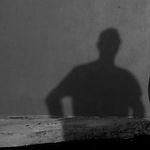 Dr. Adam Dean is an Associate Professor of digital media production and theory at Barry University. He earned his Ph.D. from Virginia Commonwealth University where he studied in the interdisciplinary Media Art & Text program. Before that Dr. Dean earned a Master’s in Radio, TV and Film from the University of North Texas and a Bachelor’s in Media Studies from The Pennsylvania State University.
Dr. Adam Dean is an Associate Professor of digital media production and theory at Barry University. He earned his Ph.D. from Virginia Commonwealth University where he studied in the interdisciplinary Media Art & Text program. Before that Dr. Dean earned a Master’s in Radio, TV and Film from the University of North Texas and a Bachelor’s in Media Studies from The Pennsylvania State University.
Dr. Dean teaches both production and theory courses in digital media studies. Production course themes include multimedia storytelling through sound, text, video and photography with a focus on web distribution. Dr. Dean also teaches a study abroad course in Rome, Italy each summer in which students write, edit and produce a cultural documentary for public service. Non-production digital media theory course themes include digital culture and identity, the performance of self on the internet, and human-computer interaction.
Dr. Dean’s research agenda focuses on image-making and the dynamics of the interface around individual and collective digital narratives. His research agenda is balanced with a media production agenda based on intercultural civic education. Dr. Dean’s commitment to civic education extends to fellowships and committee work as well, and he has been recognized for his service with several fellowships and awards.

